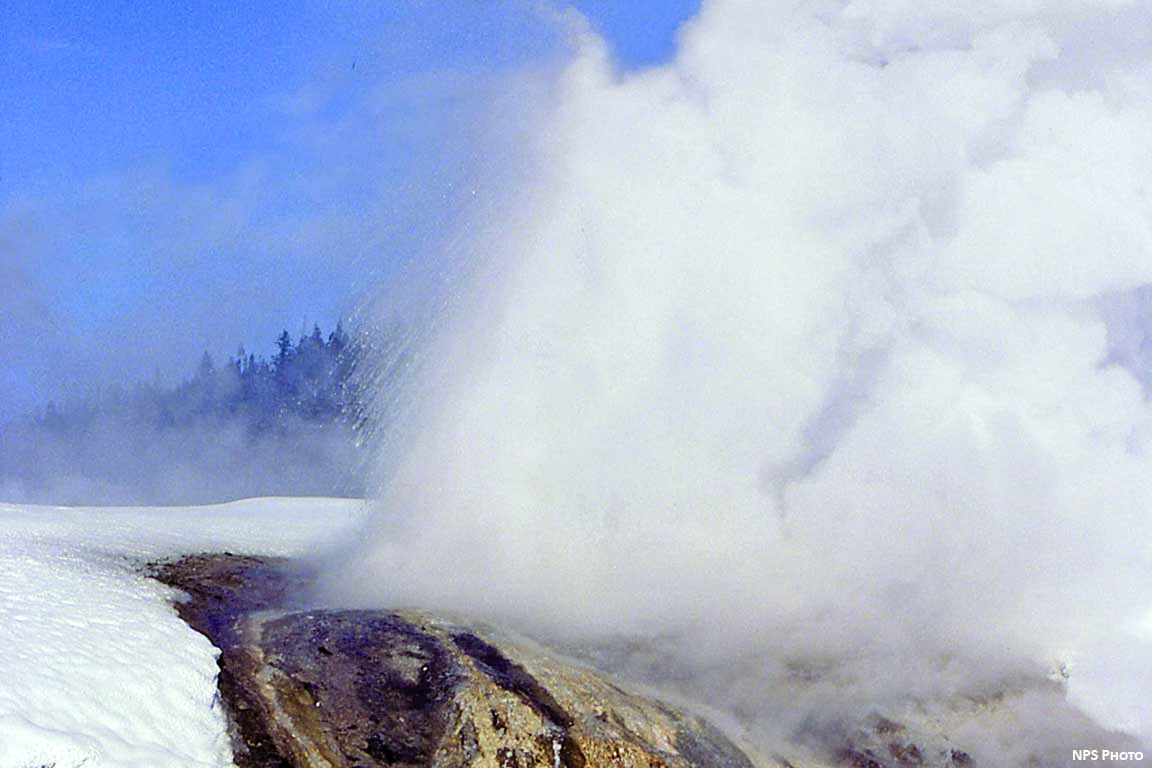Cascade Geyser
and Sputter SpringEruptions: Very Rare
Height: 12-40 feet (4-12 meters)
Name: For the way the water cascades into the river
Location: On the lower boardwalk of Geyser Hill, but best seen from the Chinese Spring area.

CASCADE GEYSER is a rare performer. The last known eruption activity happened in 1998 in response to a small, local earthquake. In the early days of the park, Cascade erupted much more often, and Beehive Geyser was seen far less than it is today. While erupting in 1988, Beehive Geyser had no eruptions seen. Is there a plumbing connection between the two? Perhaps. More eruptions from Cascade would certainly help to find out more. Cascade is named for the way the water cascades down the cliff to the river. The vent that looks like a gaping hole near the river is Sputter Spring.
WATCH FOR: Any activity – or if you notice no orange microbes on the cliff (eruptions wash them clean and kill them). From descriptions, it seems the first eruptions come only a few minutes apart, reaching anywhere from 12 to 40 feet, but as the eruptions continue, the interval between them lengthens. Durations of the eruptions are short, only lasting 10 seconds or so. Any eruption from Cascade is highly rare and should be well documented and reported to rangers.
FIELD NOTES
5 May 2017 | I didn’t get down to this area on my April visit, but was the path I took to Geyser Hill this time where I first thought Cascade wasn’t overflowing – or at least not as much. But a closer inspection of photos shows the sun reflecting off of water. However, the microbes on the right side are gone. Could it be cycling? Or perhaps overflowing less? Just odd to see less orange than before. A flight over the Upper Geyser Basin on 4 May 2017 showed Cascade to be a clear blue. East Chinaman Spring has increased activity – possible connection? Or just coincidence? I suppose more observations and time may let us know. Light thumps heard and felt here (Chinese Spring area) when I was the only one on the boardwalk – similar to what I heard and felt in December.
Blog Posts
(to come)
